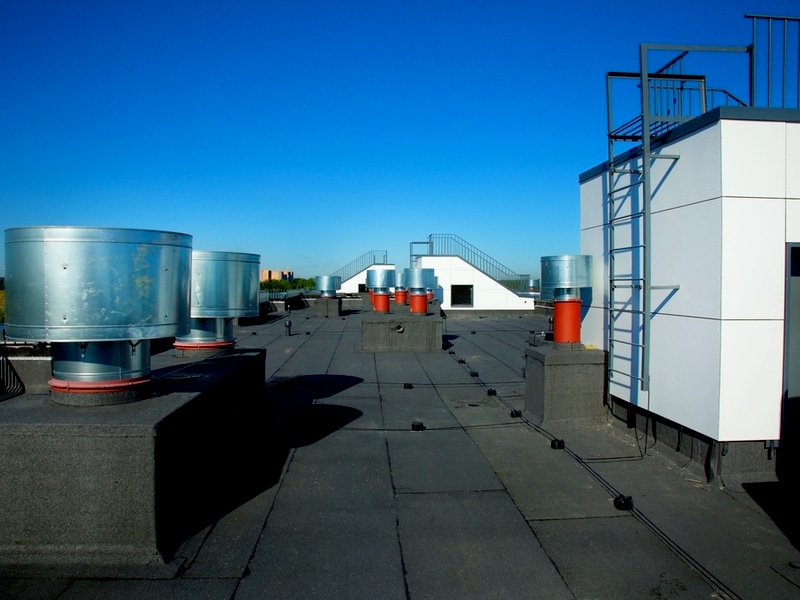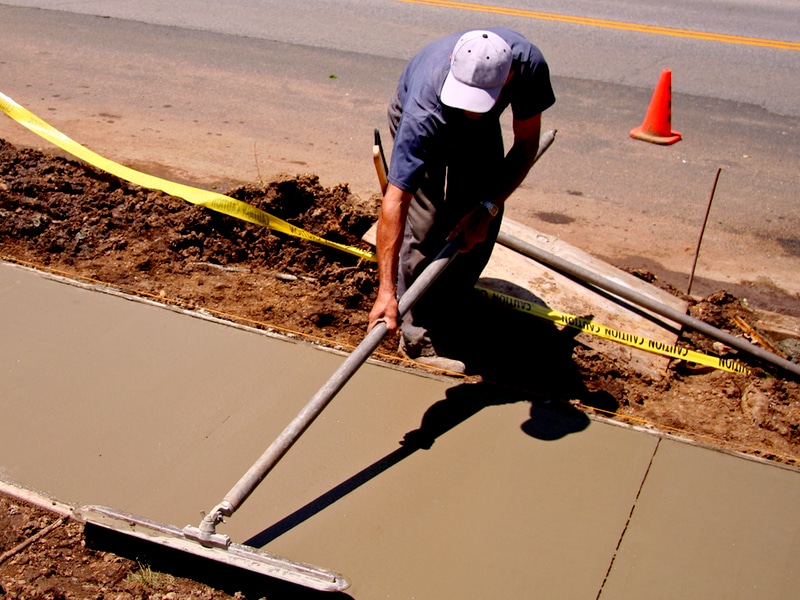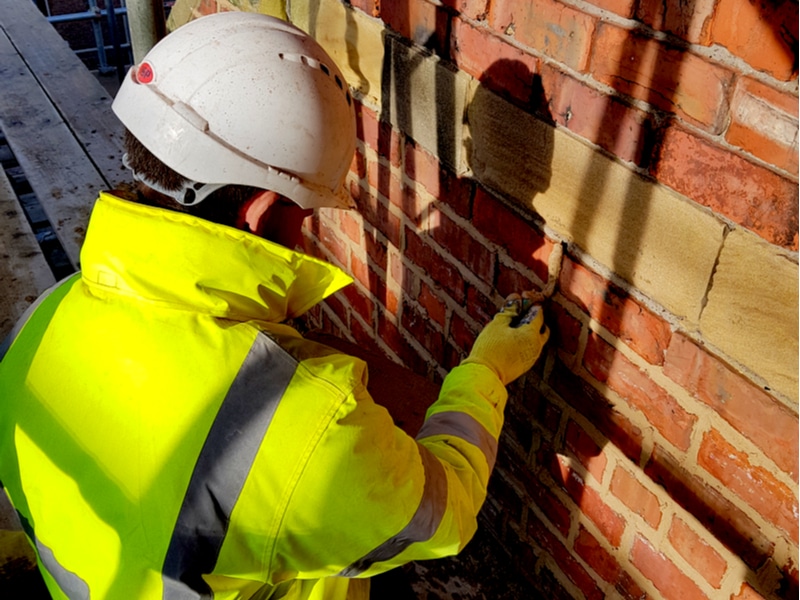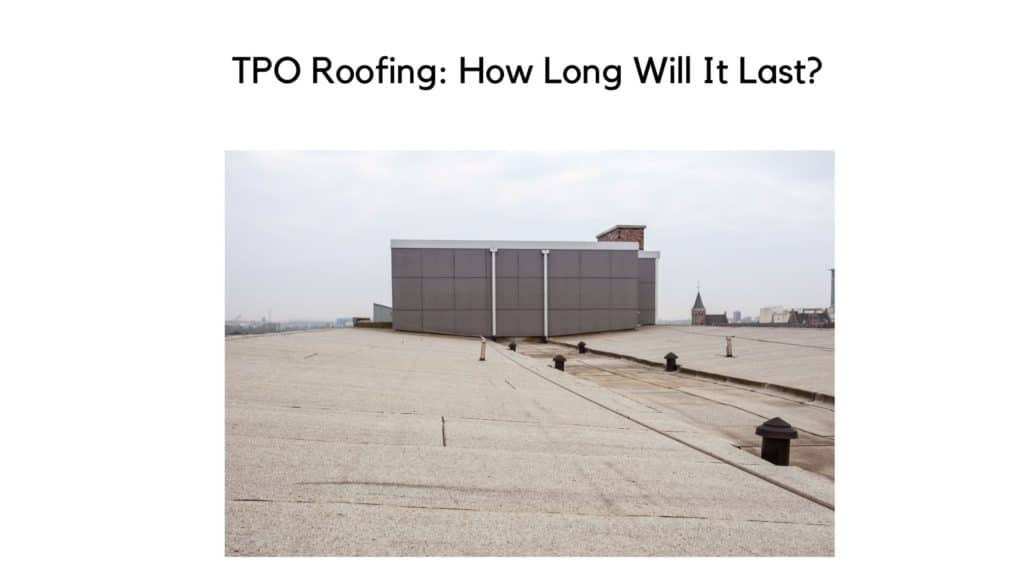If you’re starting to switch your design preferences from a traditional to minimalist look, you might be interested in including TPO roofing in your material checklist. TPO roofing is one of the most energy-efficient roofing products providing superior resistance against chemical and UV exposure.
Learning About TPO
A blend of propylene and ethylene-propylene rubber, TPO roofing is a single-ply rubber membrane often installed on flat roofs and decks. This rubber roofing system offers low installation cost while making your home energy-efficient, thanks to its good UV resistance properties. TPO roofing’s average lifespan is between 22 to 30 years, far better than the standard 15-year lifespan offered by other rubber roofs like EPDM.
One of the biggest advantages of installing TPO roofing is the low, upfront cost. You may expect to spend somewhere between $3.50 and $8.00 per square foot, labor installation cost excluded. However, the final cost will likely depend on the total area of coverage, existing roof condition, and insulation requirements.
TPO roofing’s distinctive color is white, which effectively deflects sunlight while minimizing heat gain inside the structure. You can also integrate this rubber roof with other exterior home features, whether you want to install a skylight or chimney on your roof. TPO is also less likely to develop algae growth or mildew, though seldom pressure washing can significantly extend its service life.
The Drawbacks
While the majority of TPO roofing is inexpensive, its product variations are likely influenced by the quality of materials used by manufacturers. Since TPO roofing may come in various thickness, coating protection, sizer, rubber composition, and manufacturing innovations, it becomes more difficult to estimate how this roofing material will last precisely. Also, note that product thickness isn’t considered a longevity factor, as all types of TPO design tend to wear down at the same rate, regardless of location.
The topmost surface TPO roofing is commonly laminated, which may potentially cause the roofing material to crack and deteriorate over time. Besides this weak point, TPO roofing comes in rolls but short in width, forcing roofers to create seams every eight feet or shorter. Roof seams tend to expand and contract under extreme weather, increasing the risk of creating loose seams and water leaks in the process. This makes it unsuitable for project locations under extreme heat or fluctuating temperature variations.
Water build-up is also a common issue for flat roofs, particularly if the drainage system is clogged. So if rainwater isn’t directed away through the downspout, your home will likely experience gutter problems like basement flooding or wall streaks. If you decide to install TPO roofing over roof slopes 3:12 and up, you’ll likely encounter wind blow-offs.
With regard to labor cost, TPO roofing installation can be quite expensive since roofers are required to use a torch to heat the seal on top of adhesives and leveling tools. Unfortunately, not all professional roofers are capable of installing TPO roofing with precision, so make sure to choose a roofer with appropriate credentials. There are portions to be welded or supported with a material reinforcement if the seams aren’t put in the proper place.
Proper Care and Maintenance
As with other common materials, TPO roofing should be cleaned regularly or cautiously inspected for leaks in order to prolong its service life. The use of industrial cleaning solutions and pressure washer is more than enough to keep your roof clean from debris and molds. However, it would be best if you watched out for any possible entry points where water may penetrate, including base flashings, foliage, and low curbs due to run-offs of cleaning solutions.
If you prefer professionals roofers to handle the cleaning chores, they usually begin from the top layer of the membrane to get rid of dust and dirt using a low-pressure wash. Afterward, they will scrub the cleaning solution deeply onto the surface with soft-bristled utility brushes to ensure thorough cleaning without damaging the roof. Once rinsed, the expert roofers will inspect for any roof damage over the membrane.
Cleaning must form part of your contractor’s roof maintenance routine or service list for roof repair New York to ensure continuous roof protection against direct sunlight and radiation. This also prevents algae growth, pest infestation, and wildlife invasion on your roof. But most of all, periodic cleaning greatly reduces the spread of acidic contaminants, which can affect the life expectancy of your roof as well as its capacity to perform effectively. With regard to general roof maintenance, you should seek assistance from Roofing Contractors NYC to keep your TPO roof always in perfect shape.
The main benefit of installing a TPO roofing system is that the material is UV resistant, which helps reduce energy costs while keeping your indoors cool during summer. If you want to avoid potential damage, this energy-efficient roofing material is better installed by professionals. You may expect this commercial roofing to last beyond 25 years if properly installed and cared for. However, you must think carefully, whether to acquire TPO roofing or settle for another option because you need to weigh the pros and cons before choosing this.
About Us
TCI Roofing is new york’s premier roofing company and commercial contractor. With generations of experience, you can rest assured that we will get the job done right the first time, every time.
TCI Roofing attracts and retains a group of talented professionals who approach projects with the goal of service excellence and seamless completion.
Our project executives and resource group team leaders have an average of more than 20 years in the industry and take pride in sharing their knowledge with and mentoring the next generation of leaders.
Our Services

Roofing Services
Roofing, Repairs & Leaks
Asphalt Shingles
Flat Rubber Roofing
TPO Roofing
Gutters

Concrete Services
DOT Sidewalk Repairs
Blacktop Repair
Concrete Repairs
Foundation Repairs
Driveways Repairs
Walkways Repairs


